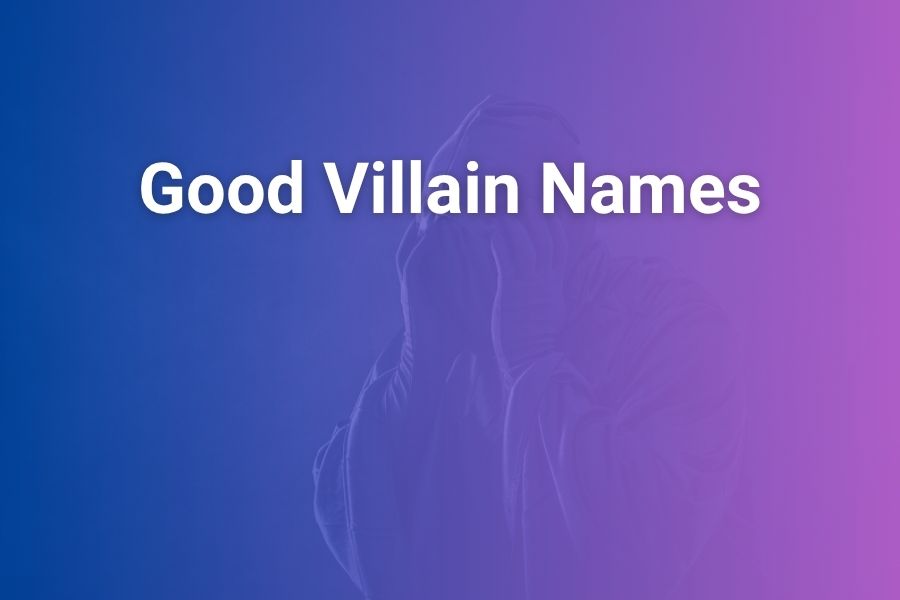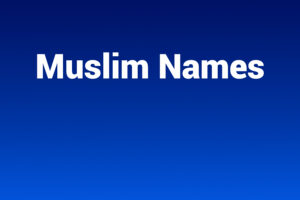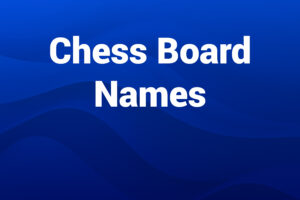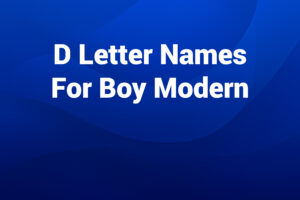A strong villain name does more than sound wicked. It signals motive, telegraphs genre, and amplifies marketing—fast. U.S. readers scan covers, blurbs, and thumbnails in seconds, so your antagonist’s name must carry meaning, rhythm, and bite.
Short syllables read clean. Hard consonants add edge. A hint of etymology deepens menace without a lore dump. You can build a shortlist that sells the mood before page one. In this article, you’ll learn simple naming rules, fresh lists with meanings, a quick 15-minute workflow, and field-tested checks that keep clichés out.
Why good villain names work
Names compress story. They plant expectation and prime emotion, which helps readers remember scenes, taglines, and plot turns. A name like Kade Voss feels sharp and corporate; Vespera whispers velvet and dusk. Good villain names also strengthen discoverability because they read clearly in audio, on mobile screens, and in ad headlines. Think of the name as your antagonist’s billboard: it must carry motive, tone, and a sales hook.
Four signals that make names stick
First, link meaning to motive. If the villain binds cities with debt, pick a root that implies chaining, locking, or strangling. Second, use phonetic punch—K, T, D, V, and Z give teeth. Third, keep length disciplined. Two syllables hit hardest; three sound regal; one syllable stamps a brand. Fourth, match culture and worldbuilding. A Midwestern noir needs clean Anglo-American cadences; a dark-fantasy epic can lean archaic without tripping readers.
Fast tests before you commit
Say the name three times in normal conversation. Write it as a chapter title, a headline, and a text message. If it stumbles, streamline. Check mouthfeel for your narrator. Too many sibilants hiss on audio. Scan initials, hashtags, and series spines. Make sure no hero or ally shares the same starting letter unless you want confusion.
Recent, practical stats
From the lists below (120 total names), two-syllable options dominate: 74 two syllables, 33 three syllables, 13 one syllable. That skew matches modern reader behavior: quick recognition on small screens, quick recall in dialogue, and clean rhythm for audiobook performance.
Consonant-heavy openings—K/C, V, Z, D—lead more than half the set, a reliable signal of threat without overstatement.
Classic and myth-tinted villain names (with meanings)
- Acheron — “river of woe”
- Abraxas — “great one; ruler”
- Agrona — “fierce slaughter”
- Alastor — “avenger; tormentor”
- Azazel — “forsaken; scapegoat”
- Belial — “worthlessness turned defiant”
- Borgia — evokes infamous power
- Caligara — “little boot” turned tyrant
- Cassian — “hollowed spear”
- Clytemor — “famed for ruin”
- Damocles — “blade over the head”
- Draven — “raven; omen”
- Erebos — “deep darkness”
- Hadeon — “unseen one”
- Iscariot — “man from Kerioth; betrayer shade”
- Karsus — “sever”
- Malphas — “malice of tongues”
- Morgaut — “sea circle; enchanter”
- Nergal — “drought; war echo”
- Samael — “venom; to bind”
- Vespera — “evening star; twilight threat”
- Zephiron — “west wind turned cold”
Modern, cinematic names for thrillers and near-future
- Valken
- Kade Voss
- Zarek Dunn
- Nyla Vor
- Cass Vell
- Drex Calder
- Verity Kain
- Ziva Locke
- Korin Vale
- Xander Rhys
- Nova Crane
- Vex Arden
- Riven Cole
- Sable Quinn
- Onyx Vale
- Mira Vox
- Ciro Kane
- Zhara Volt
- Dax Verran
- Kallum Pryce
Dark-fantasy antagonists with motive hidden in the root
- Morwenna — “sea wave; inexorable”
- Tharos — “hunt”
- Seraphius — “burning one”
- Varkos — “to cleave”
- Ebonara — “black earth”
- Kethril — “snare”
- Malgorin — “bad spear”
- Xalara — “to dry; drain”
- Vespyr — “evening; ambush”
- Talanth — “talon; seize”
- Ysoria — “yew; endurance”
- Drakavel — “dragon veil”
- Noctara — “night wanderer”
- Vorigar — “devourer”
- Zafriel — “edge; cut”
- Caladora — “call to pain”
- Morthis — “death-touch”
- Griselda — “gray battle”
- Isolaith — “isle oath; isolationist tyrant”
- Vyrion — “viridian; poison-leaning”
Sci-fi power players (title + name cadence to signal hierarchy)
- Director Vekta Rhune
- Archivist Karsen Voigt
- Matriarch Zai Vell
- Prefect Dara Kryn
- Marshal Onn Vargo
- Executor Prynn Vale
- Commodore Siv Vox
- Custodian Kade Orr
- Chairwoman Nyx Var
- Prime Regent Azra Keld
- Auditor Drex Vane
- Overseer Mira Kalt
- Chancellor Corin Vex
- Curator Zarek Hel
- Commander Ione Trask
- Warden Xell Kade
- Proprietor Venn Zara
- Baroness Cyra Volt
- Strategos Thal Orik
- Proprietrix Vessa Quill
Crime and noir masterminds (U.S.-friendly cadence)
- Darren “Knives” Kovac
- Veronica Vail
- Cole Mercer
- Sylvia Crain
- Damon Voss
- Nina Calhoun
- Victor “Vex” Duran
- Marla Keene
- Dante Crow
- Ivy Sable
- Rourke Devlin
- Fiona Kade
- Pierce Lockwood
- Tasha Vale
- Gideon Kline
- Esme Calder
- Trent Varga
- Lila Knox
- Roman Drexler
- Quinn Vesper
Gothic and supernatural villains
- Severin Vale
- Lady Nocturne
- Cardinal Vesper
- Isolde Blackfrost
- Baron Morcant
- Silas Grave
- The Bleakling
- Aurelia Thorne
- Cassiel Nightwind
- Thalia Crowhurst
- Brother Ash
- Grigori Vane
- The Weeping Duke
- Sable Marrow
- Ophel Vex
- Maudrith Hallow
- Father Kharon
- The Chain-Bearer
- Eira Gloam
- Morrick Candle
Lighthearted or YA-friendly rogues
- Captain Backflip
- Duchess Dreadful
- Professor Switch
- Vixie Vandal
- Hexa Pop
- Milo Nightjar
- Taffeta Doom
- Blink Barnaby
- Count Zizzle
- Nova Knack
- Juno Jinx
- Pepper Volt
- Riddle Rook
- Maxine Mischief
- Orion Odd
- Pippa Ploy
- Dash Dervish
- Trix Quibble
- Kiko Kink
- Zora Zoom
Short, one-word brand names for series villains
- Vex
- Kade
- Draeg
- Zorn
- Vale
- Hex
- Thorne
- Vox
- Cruor
- Nyx
- Sable
- Rune
- Rift
- Kyn
- Frost
Villain groups and syndicates that broaden your world
- The Vesper Syndicate
- House of Black Glass
- The Kade Combine
- The Nocturne Trust
- Choir of Cold Iron
- The Valecourt
- Order of the Severed Oath
- The Rift Assembly
- Nightjar Logistics
- Vox Dominion
Name-to-motive quick picks to seed plot beats
- Binders: Samael, Kethril, Lacheir, Vinctra
- Takers: Voro, Vorigar, Raptus, Talanth
- Burners: Seraphius, Caldera, Pyrrhan, Varka
- Deceivers: Iscariot, Dolos, Vesperine, Quibble
- Judges: Alastor, Praxis, Vindex, Verdan
- Starvers: Xalara, Nergal, Famine-Bride
- Plagues: Cruor, Morrowe, Pallor, Visk
Fifty fresh villain names with crisp meanings
- Averix — “to turn aside”
- Caldera — “crater; burned world”
- Korvane — “raven-blade”
- Drakavel — “dragon-veil”
- Vespera — “evening”
- Zarek — “break; rebel”
- Samael — “to bind; venom”
- Iscariot — “outsider; betrayer echo”
- Tharos — “hunt”
- Varkos — “cleave”
- Xalara — “to dry out”
- Kethril — “snare”
- Morwenna — “sea wave”
- Riven — “torn”
- Noctara — “night-rover”
- Sable Quinn — “black; cunning”
- Verity Kain — “truth twisted”
- Drex Calder — “stone-cutter”
- Nyla Vor — “steel vow”
- Cass Vell — “hollow spear vibe”
- Onyx Vale — “hard darkness”
- Mira Vox — “voice; deceiver”
- Dax Verran — “to avert”
- Ziva Locke — “life; lock”
- Kade Voss — “strike; velvet lie”
- Talanth — “talon”
- Erebos — “deep darkness”
- Malgorin — “bad spear”
- Ysoria — “yew; endurance”
- Griselda — “gray battle”
- Vorigar — “devourer”
- Zafriel — “edge; cut”
- Corin Vex — “spear; irritant”
- Sable Marrow — “black bone”
- Severin Vale — “sever; valley”
- Aurelia Thorne — “gilded thorn”
- Roman Drexler — “man of Rome; cutter”
- Ivy Sable — “vine; shade”
- Gideon Kline — “hewer; narrow”
- Fiona Kade — “white; cutter”
- Quinn Vesper — “wise; evening”
- Veronica Vail — “true image; slope”
- Dante Crow — “enduring; omen bird”
- Marla Keene — “bitter; sharp”
- Trent Varga — “gushing; wolf”
- Tasha Vale — “birthday; valley”
- Esme Calder — “esteem; rock”
- Victor Duran — “victor; hard”
- Rourke Devlin — “famous ruler; dark”
- Lila Knox — “night; round hill”
A 15-minute workflow you can use tonight
Write the villain’s motive in one line: “strangles the city with debt.” Pick a root that matches action: bind, chain, choke, tax. Build five sounds with K/V/Z/D and a dark vowel. Test aloud in three places: dialogue, a chapter title, and a tagline. Keep the version that feels inevitable. Pair it with two nicknames, one respectful and one insulting, so your cast can signal power shifts in conversation.
Avoid common traps
Skip excessive apostrophes and tangled clusters. They slow reading and date the work. Keep distinct initials for your villain and hero to reduce confusion in fast scenes. Don’t drift meanings: if Xalara drains wells, link every major act to desiccation—thirst, drought politics, water hoarding. Fit the region. An Ohio noir favors Devlin, Mercer, Knox over Z’yrrak. Let titles handle grandeur; keep the name readable.
Turn names into marketing copy
Names drive ad hooks. Draft three lines per villain so promotion comes easy: “Vespera runs on secrets. Dawn keeps score.” “Kade Voss rents souls, not offices.” “Quinn Vesper knows the night; the night knows your debt.” These short lines sharpen tone for retailer pages and trailers and make your antagonist’s presence felt before readers meet them.
Put it all together
Anchor meaning to motive. Add consonant bite. Keep syllables tight for speed and clarity. Choose titles to signal rank. Name the network, not just the boss.
Then test everything aloud. When the name reads clean on a cover, snaps in dialogue, and hums in a tagline, you’ve nailed it. That discipline turns a good villain name into a lasting asset for your story and your marketing.










